






|

|

|

|

|

|
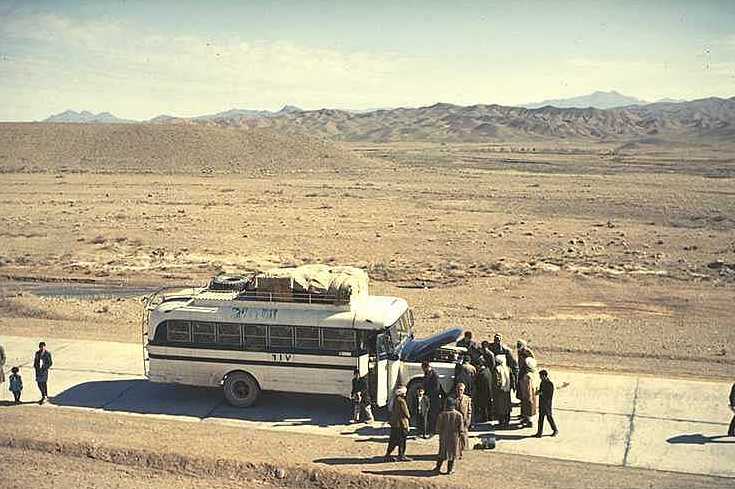
Several young backpackers in the late sixties and the early seventies travelled the long way by land from Europe to Kathmandu through Turkey, Iran, Afghanistan, Pakistan and India to Nepal. The majority spent a few months or half an year out there, and a few of them settled in Nepal or India for years, living on a low budget with hash and other drugs. It became a trend, unmistakable connected to the hippie generation, founding the backpacker's massive conquer of the world several years later. But why did they do it?
There are several answers to that question. The romance of the road, the attraction of drugs, the need of breaking the daily, monotonous way of living, the search for direct experience, the desire to explore what's on the other side of the desert or the mountains, the curiosity to foreign, exotic cultures. And to quite a few, a search for their own identity.
However, no matter which reasons took them on the trail, they have one thing in common: Few of them remained the same persons after their return, and it's no exaggeration to say, that the trip became decisive for their behaviour and points of view for the rest of their life. Several Danish backpackers from that period, who came home after a long stay in India or Nepal, were unable to do very much during the next half year after their arrival - apart from gazing at a wall, trying to digest their great experience!
Frontiers of many kinds were crossed by the hippies and the backpackers of the past. In the late sixties and early seventies, travelling to the third world was much more complicated and unusual than today, and for the same reason, places like Kathmandu and most of the sites along The Hippie Trail were much more exotic than now. In the sixties and early seventies, individual travels to The Middle East and The Far East was an exotic experience, which had the capability to change you forever. Backpackers from the sixties and seventies didn't have today's security at all. E-mail, credit cards and mobile phones didn't exist, and a phone call to your home country was a rare emergency action. On the other hand, travellers still had the feeling of being true pioneers and explorers.
Those who had never been outside Europe or the other western countries - which was by far the major part - got the cultural shock of their life. The first really exotic country on the route was Turkey, but the biggest challenge of them all was the confrontation with India. India still has a vast diversity of religions, culture, languages and nature to offer, but to many - especially if you are not used to travelling as an individual - the country can be a real challenge for you! The best things to bring with you are a relaxed mind, patience and a good sense of humour. However, if you don't like curiosity, crowds of people, bureaucracy and a certain amount of insanity, you shouldn't go there, not even today!
I travelled along The Hippie Trail by public transport from Copenhagen Central Station to Kathmandu in Nepal during the winter and spring in 1969. My expectations about the trip were at the same time enormous and unreal. I had never been outside Europe before, and like other backpackers, my confrontation with the Orient and the Far East became the travel experience of my life so far. I had several reasons for making the trip, but one of the most important was an old dream of trekking in the Himalayas - a region visited by very few westerners at that time. The trip started at Copenhagen Central Station on an icy, late night, by entering "The Baltic Express", heading for the former East Berlin. Train travels were much more adventurous in the sixties than today, and railways were felt, smelled and heard much more than in today's synthetic, metallic tubes. One of the things I found very exotic was, that "The Baltic Express" used to have a direct carriage from Copenhagen to Moscow in The Sovjet Union.
On the way to new horizons
And here is an ultra-short description of my route. I made several stops on the way, but the full story would require hundreds of pages:
Early the next morning, I reached East Berlin and continued by train to Prague, Budapest, Belgrad and Sofia to Istanbul in Turkey. After some days there, I crossed Bosporus by ferry - the official border between Europe and Asia - and entered another train eastwards through the Turkish wilderness. This train ride was fabulous and adventurous. The train departed from Istanbul in the evening, heading for the town of Erzurum in the east, and the next morning, we were in the Anatolian highlands. It took the train about 2 days to reach Erzurum, passing a beautiful, but very desolate landscape of plains and mountains. Unlike what most people think about the climate of Turkey, the eastern part is extremely cold during the winter due to the high altitude. Erzurum itself is about 2.000 meters above sea level.
Erzurum was a terrible place in the winter of the Anatolian highlands - bitterly cold and VERY far from the dreams of the legendary countries waiting ahead! I spent an overnight day there, waiting for a delayed, local bus further eastwards due to snow storms, drinking gallons of tea to keep warm, watching the horse-driven sledges on the streets in February.
Finally, we crossed the Turkish wilderness again, passing the legendary Ararat mountain (known as the place where Noah's Ark stranded!). After entering Iran, the temperature raised together with the decreasing altitude, and a couple of days later, I reached the capital Tehran via Tabriz. Entered the night train from Tehran running along the northern branch of The Hippie Trail between Tehran and the very religious town of Mashad in eastern Iran through a marvellous desert area with snow-covered, high mountains in the horizon. In Mashad, I got a visa to the neighbouring country Afghanistan, crossing the border near Herat, and continued by the southern road along the edge of the wild mountains of central Afghanistan to Kabul via Kandahar.
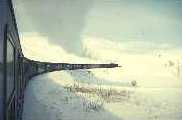
|
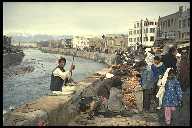
|
|
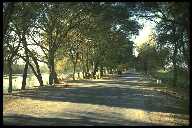
|
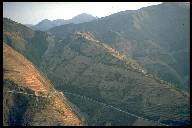
|
The 4 photos to the left show parts of The Hippie Trail from Turkey, Afghanistan, India and Nepal.
|
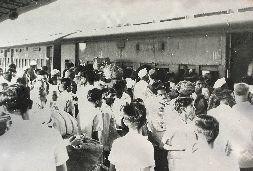
|
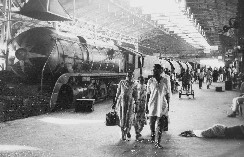
|
|
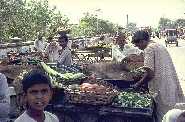
|
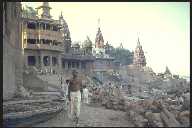
|
The 4 photos to the left are all from india.
|
|
Some places find their way into your heart instantly and Kathmandu was one of them. Perhaps the long ride up from the Indian plains helped, but as we topped the edge of the valley and dropped down towards Kathmandu, it seemed like Shangri-La, with multi-tiered temple roofs punctuating the city skyline, oil lamps twinkling through latticed wooden windows and the setting sun warming the snow-capped Himalayan range as a backdrop.
Source: Tony Wheeler, the founder of the "Lonely Planet" books. |
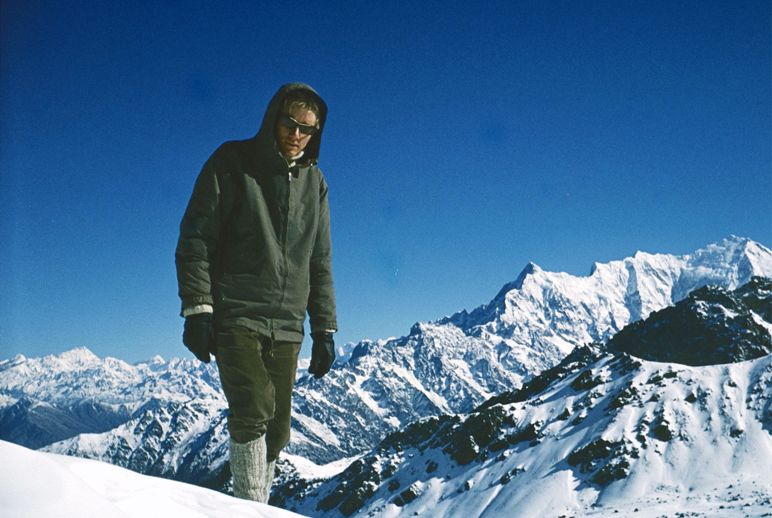
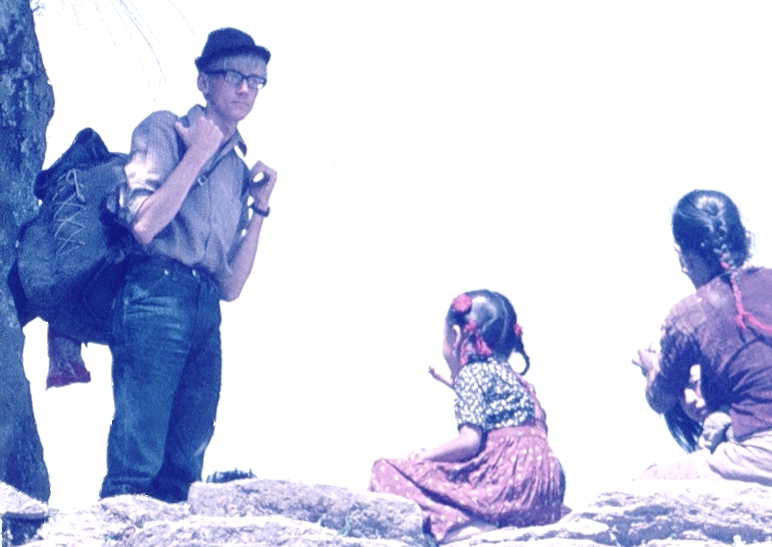
|
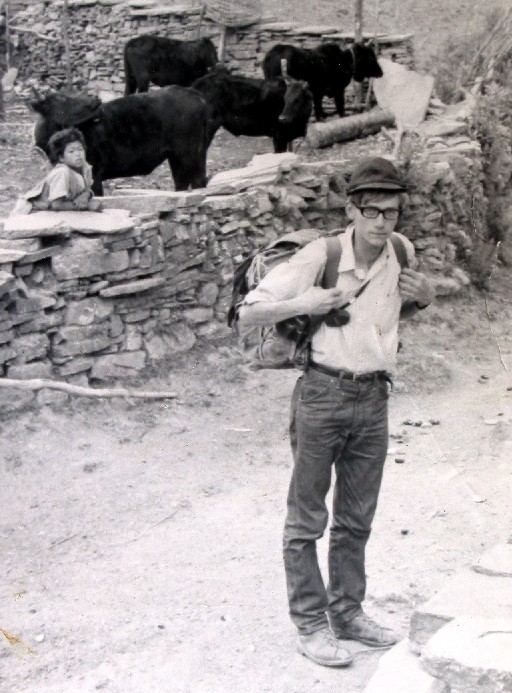
|
The trip to Nepal along "The Hippie Trail" in spring 1969 changed my life and became decisive for many of my personal attitudes later. I was one of the lucky guys, who visited The Middle East, The Far East and the Himalayan mountains before the massive tourist invasion at the end of the previous century.
My photos above are from spring 1969 on my trek along "The Jomoson Trail" starting from Pokhara. Today, the route is blessed with a road, but in the sixties, you had to walk all the way to Jomosom along a marvellous and adventurous footpath.
Several months after my return, I lost interest in most of the ordinary, daily events, and to me, the only interesting subjects were Nepal, India and the Himalayas. Small pieces from my experience turned up all the time and kept playing in my mind like film strips: The ringing bells from the yak caravans on the trails of the Himalayas, the religious music from the mountains of Nepal, the smell of incense in the temples and the monasteries, the whistle of the gigantic, Indian steam locomotives, the heavy noise from the trains crossing the iron bridges of northern India, and several others.
To me, the trip started a life of continuous travelling. Once you have discovered the potential of individual travelling, it's very hard to get rid of the desire to keep on exploring new parts of the world.

|

|

|

|

|

|
If you have any comments or questions for me, please send a mail to pontoppidan214@gmail.com
If you want to see my main home page with plenty of links to travelling and trekking, then click HERE